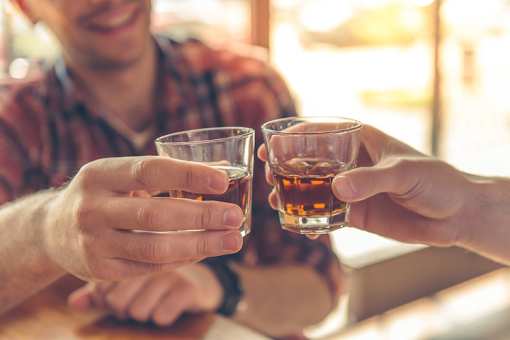About Us :
Experience magnificent Northwest Coast masks as they come to life in the glimmering firelight of Kwakwaka'wakw (Kwakiutl) ceremonial house.
The Lelooska Family shares songs, dances, stories and masks which display the rights, crests and privileges bestowed on them by the late Chief James Aul Sewide.
Chief Tsungani carries on the traditions of his brother, the late Chief Lelooska, performing with other family members in Ariel, Washington, 40 miles northeast of Portland, Oregon.
Living History Programs have been presented for more than three decades. Given for educational purposes, programs, classes, and workshops are sponsored by the Lelooska Foundation, a nonprofit 501(c)3 organization
History:-
Chief Lelooska died on September 5, 1996. Following the death of a clan chief a family must wait at least four years before potlatching. At Lelooska's 1996 memorial service, the chieftaincy and Lelooska's name Gixken was passed to Tsungani. Preparations for the potlatch began.
In July of 2001, the Lelooska Family traveled to Campbell River and Cape Mudge, British Columbia to meet with the Sewide family in final preparation for the Lelooska Memorial Potlatch. Once back home, the family continued working towards the potlatch which was now less than two months away. Sewing was completed on blankets, bags and appliqued pillows. Jewelry and woodcarvings were completed. Food and other gifts were gathered.
Dozens of First Nations relatives and friends from British Columbia, Canada began to arrive on Wednesday, Sept.4. They joined the Lelooska Family to complete the final preparations for the potlatch. Chief James Aul Sewid's daughters, Dora Cook, Louisa Assu, Daisy Sewid-Smith and Mabel James came with their families, three generations. The following days were filled with dancing practice, shared feasts and songs. Chief Adam Dick, who had come to represent Chief Gixken, had spent countless hours working with the singers perfecting the songs which were to be shared at this potlatch.
The Potlatch began on Friday, as family and guests gathered in the big house. The family lead the way to the museum for the blessing and unveiling of the new totem pole. Guests stood amongst a sea of glistening button blankets, as the sunlight stretched across the new pole standing proudly in front of the Lelooska Museum.
To mourn the passing of chiefs and loved ones the memorials began in the ceremonial house. A crescent of vacant chairs was set before the witnesses on the dance floor. From behind the curtain, blanketed women entered and each took her seat on behalf of a loved one that had passed on. Placed on a chair in front of the women were pictures of Chief Sewide and Chief Lelooska sitting together in this same house, and of Shona-Hah and her husband Fearon.
Songs of mourning filled the air. The singers sat on either side of the long wooden drum. The memorials were held for Don Lelooska, Mary Shona-Hah, Fearon Smith Sr., Chief James Aul Sewide, Flora Sewide, Oswald Sewide, Cindy Olney-Smith, Frank Normandin, Norman Stoll, Helen Stoll, Robert Hinkle, Robert Hinkle Jr., Lady E. Hinkle, Johnny Donovan and Leverett Richards.
Breaking for lunch, everyone found a quick meal from the piles of sandwiches, salads, watermelon, chips and cookies lining the tables in the museum, before gathering once more in the big house.
It was now the start of the C'eqa, the sacred red cedar bark dances of the winter ceremonials. The initiated Hamatsa came forth from behind the curtain, sharing her dances, which culminated in the Humsamala, the masked dances of the supernatural birds, Raven, Hox, Hox and the Crooked Beak of Heaven. Other sacred dances continued as the young followed the initiated, their names confirmed following their dance. Each dance was separated by a women's dance. Before the red cedar bark dances were put away, the extended family and friends joined in the social dances around the fire.
Feasting followed the sacred dances. Venison, Chicken, Chili, Chowder, Salads, Vegetables, Breads, Casseroles, Cakes, Cobblers and more filled the museum as guests made their selections before finding their seats beneath the tents outside. An abundance of food beckoned guests to feast to their hearts content. The singers gathered in song as the women danced in thanksgiving, and the evening came to a close.
Guests began to arrive the next morning to feast before the celebrations began . As guests were gathered in the big house, the family also recognized their Cherokee heritage in the giving of names to those who had not yet received them, Eric Reese, Augustus, Cindy Hinkle and Joy Cook. Hereditary Kwakwala names were then given to Eric, Augustus, Dustin and Lottie.
The Tlasala began as the family shared the adventures and encounters of their ancestors with supernatural beings. Three headdress dancers danced in front of the drum as the attendants teased them and finally drove one of the dancers from the house. Once gone, the attendant returned with the headdress. Questioned by the chiefs as to the whereabouts of the dancer, the attendants often tried to fool them by pulling a guest from their seat and placing the headdress on them. Finally, they were ordered to go outside and bring the supernatural creature into the house.
After failed humorous attempts, they were successful and the supernatural beings entered the house, untouched by the attendents as they made their way around the fire. Bukwus, the wild man of the woods entered the house in search of a cockel which was found and shared with the guests. Full Moon and Half Moon argued once more over who would bring the eulachon to the rivers and streams. Yagis came forth from the House of Copper, as did great Gumakwe, ruler of the Sea Kingdom. Grandmother transformed herself into a loon. Dzunugwa, the timber giant, lumbered across the floor, opening to reveal the ancestors within. Qulus, the highest crest of the House of Lelooska and the House of Sewide, strode across the floor, opening to reveal the face within.
All of the family rose and took part in the family dance. Pausing briefly, many of the gifts that would be later given were draped across family members and carried, as they were danced for the witnesses to see what was to come.
The feasting continued in the museum. Hundreds of pounds of salmon had been prepared behind the ceremonial house and were being expertly cooked over an open fire by Dave Blodgett, of the Yakama Nation. Guests were served their fill of salmon, corn on the cob, potatoes, salads, vegetables, casseroles, chowders, chicken, breads, fruit, cakes and cobblers. It was more then apparent that no one would leave hungry.
Meanwhile in the big house, the fire was covered, and the gifts were brought onto the floor. Woodcarvings, jewelry, dolls, ermines, headdresses, drums, bronze medallions, ivory carvings, applique pillows, bags, blankets, baskets, bowls, buckets, vases, preserves, t-shirts, hats, mugs, necklaces, bracelets, potholders, towels, coins, currency and much more covered the floor, three feet high. Property distribution began with the chiefs, singers, noble men, women and children.
Throughout the next several hours, the Lelooska Family distributed the gifts throughout the house, as guests received them for witnessing these important and timeless events. As the weekend came to a close, it was a time of celebration, remembering the past, and living part of a vibrant, thriving future.






